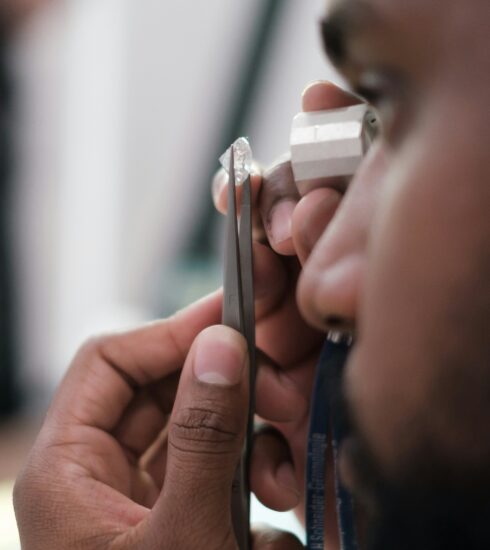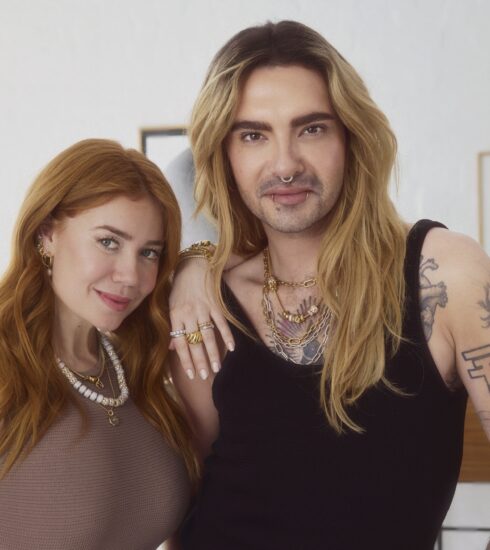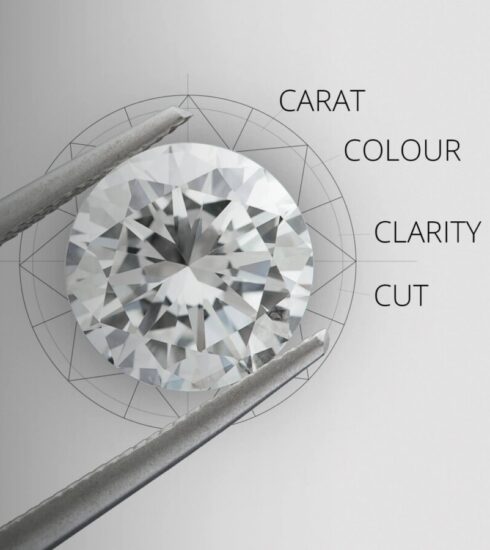That was my Vicenzaoro - Part 2: The thing with the trends
Vicenzaoro sees itself not only as a trade fair, but also as a platform where trends are made and discovered. This is certainly not wrong - the very international audience of exhibitors helps to identify what is really becoming a trend - global commonalities do not lie and provide information on developments in the industry. The Trendtalk at Vicenzaoro and the accompanying annual Trendbook are also big affairs, but this year was somehow different ...
Left: Photo spot at the trade fair entrance: Vicenzaoro gold cube with "Crafting the Future" lettering. © Insight Luxury
Why are trends important?
You can certainly ask yourself this question. Trend doesn't just mean something that is visibly in fashion at the moment, but also describes a development, a tendency. You can say more about it than just which jewellery you want to have in your shop window.
The Vicenzaoro goes deep with the annual Trendvision Jewellery + Forecasting lecture, presented by Paola de Luca. The team looks at the entire global market, big players like China or the Arab Emirates, Gen Z... and this year they don't come to a clear conclusion. Officially, this year's Trendtalk calls it the "Quantum Age of Trends" - one would also call it postmodernism. This means that in an age in which everything essential has already been researched, discovered and lived out, there are basically no new trends. Instead, everything exists simultaneously and very quickly, the clearly recognisable trends - this time in the sense of a fashion style - are shifting into subcultures. To be more precise: everyone picks what they like best from the colourful bag of trends and sticks with it.
The good news is that you can do virtually nothing wrong - but you can't really do anything right either. A great deal of personal initiative is required to find out which style and attitude to life suits your own niche - or you can become a trendsetter yourself. After all, anything goes. If you take a closer look or talk to other industry insiders, a few things will stick ...
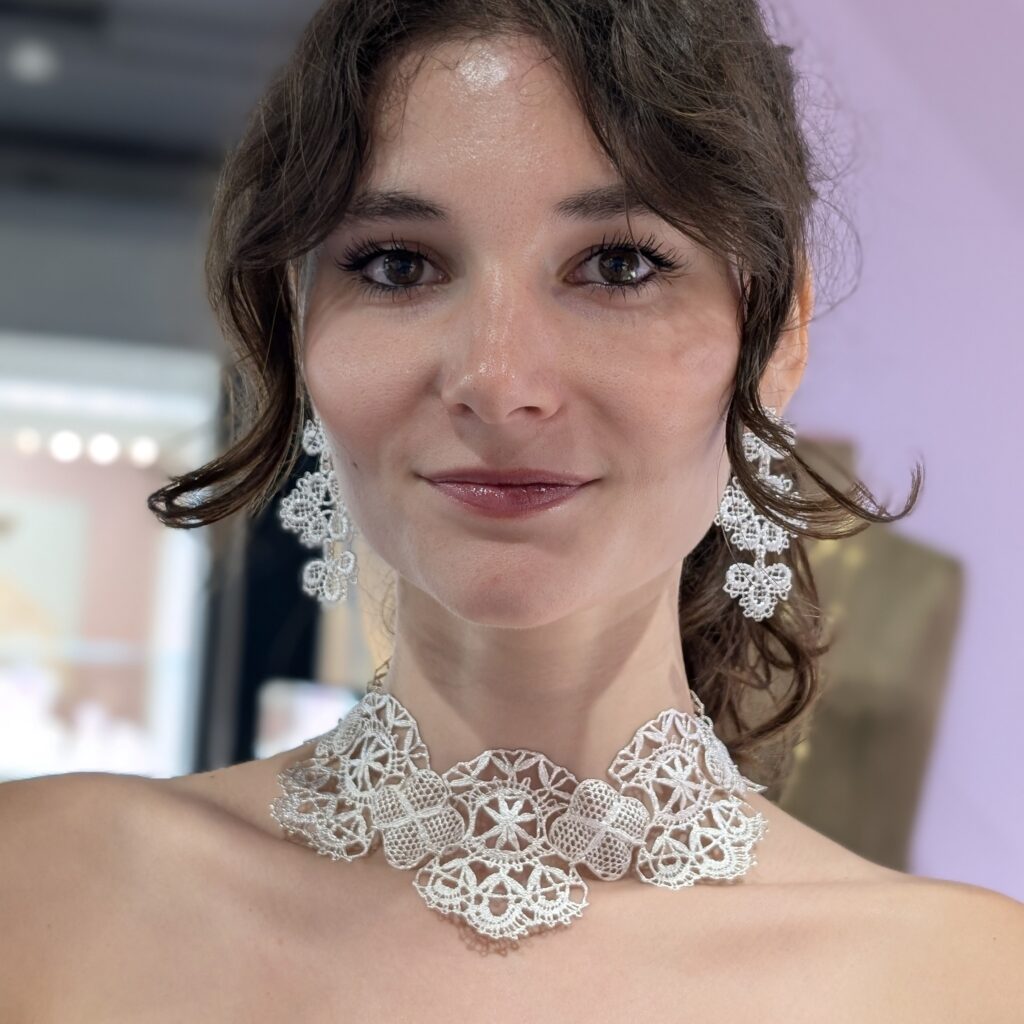
Out? Jewellery and artificial intelligence
One aspect that was highlighted at the 2024 Trendvision Talk was the topic of artificial intelligence. Certainly, the possibilities are endless in theory and the new technology was touted because the artificially generated material can also promote inclusivity. Examples of glossy campaigns with ethnically diverse models were shown, but also more images with people of advanced age, often referred to as "silver society" due to their white hair. The idea of including all population groups in marketing, regardless of origin, gender and age, is a very good one - but is AI the key?
One year later, we can probably say: not so much, because the possibilities offered by artificial intelligence were more of a side note in this year's Trendtalk. From this, we can probably deduce that the topic has not gained as much momentum as expected. My theory is that something as emotional and personal as jewellery perhaps doesn't get on so well with artificially generated images of people who don't actually exist. There is no connection to reality and no basis for identifying with the artificial person. At least that's how I feel, and perhaps many others too - there's no spark. I'm curious to see what the 2026 Trendvision Talk will have to say about this.
The silent triumph of laboratory diamonds
Laboratory diamonds have long been a trend - this is nothing new, but anyone who has followed the debate in Germany will also know what a bone of contention the synthetic stones were for a long time. There was only an either/or. If you talk to jewellery producers at Vicenzaoro today, things look a little different.
In view of the enormous rise in gold prices, the now very affordable laboratory diamonds are becoming a financial counterweight - whether for wedding ring manufacturers or classic jewellery brands. The general message is: if the customer wants it, then we offer it. The decision can be that simple!
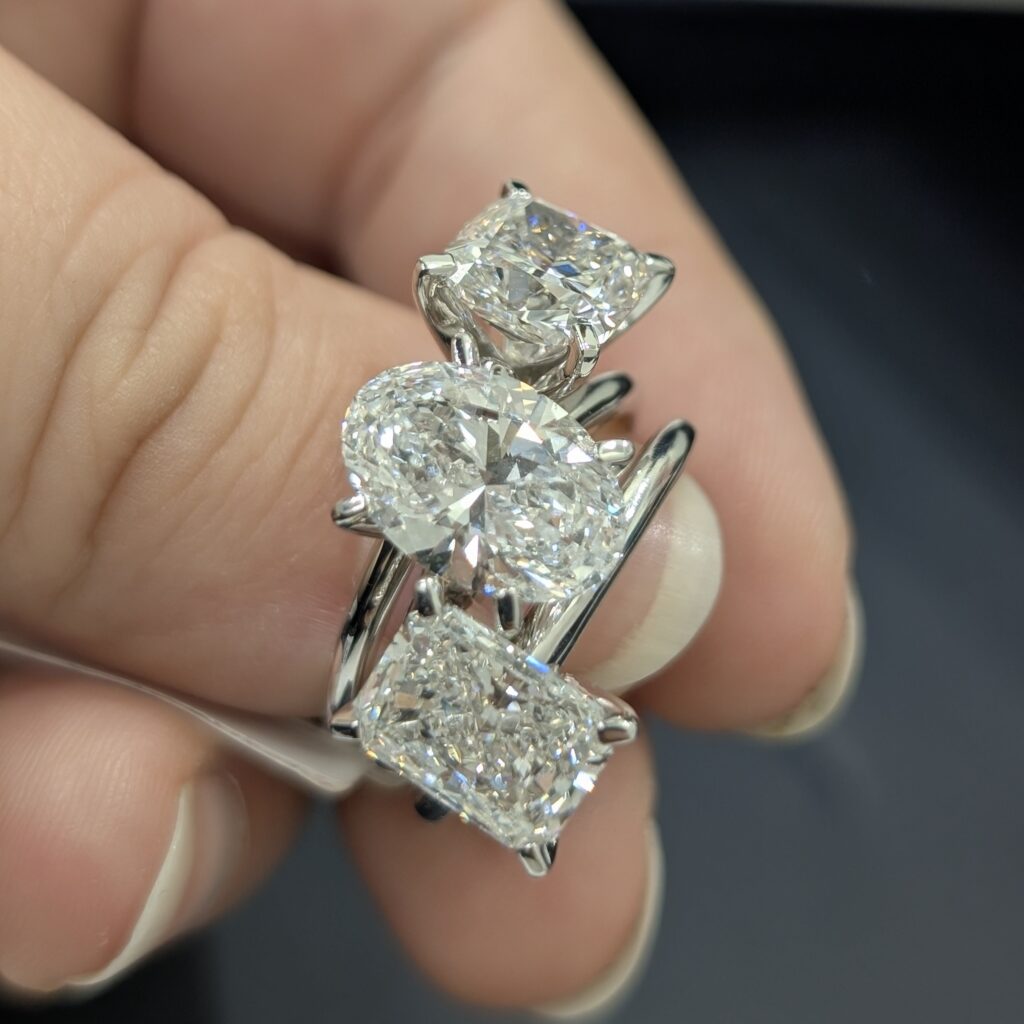
The extent to which the topic of laboratory diamonds is accepted varies - some manufacturers rarely experience such special requests, while for others it becomes everyday business. In the end, the winner is probably what makes both sides happy: people with smaller budgets also want to afford beautiful jewellery and manufacturers and retailers are happy to have customers who still do business in economically uncertain times. Perhaps with this realisation we can now slowly bury the hatchet.
New materials conquer the jewellery market
Admittedly, I was less aware of this development personally while I was at the trade fair, but this was not the first time I had read about it and heard about it from colleagues in the industry: new materials such as wood and glass are conquering the jewellery market. This tells me two things. Firstly: the motivation to be innovative is still there and secondly: "base" materials such as wood, stone, plaster or glass lower the price - and of course the margin increases for good design - allow you to escape the pressure of the gold price a little and give the piece of jewellery its own character, which in turn serves the need for individuality very well.
Good things that continue to stand the test of time
As already mentioned, it is now difficult to find brand new, unprecedented trends. But it is also easy to see which areas are very suitable for consolidating your foundations and working with concepts that simply work and make jewellery lovers happy.
This still includes changeable and modular jewellery that can be worn in different ways. The classics are necklaces that become chokers, Y-chains or bracelets, as well as earrings with interchangeable elements that can be clipped on. This offers more freedom for individual looks and the versatile functionality of the jewellery gives you the good feeling of having got a lot of added value for your money.
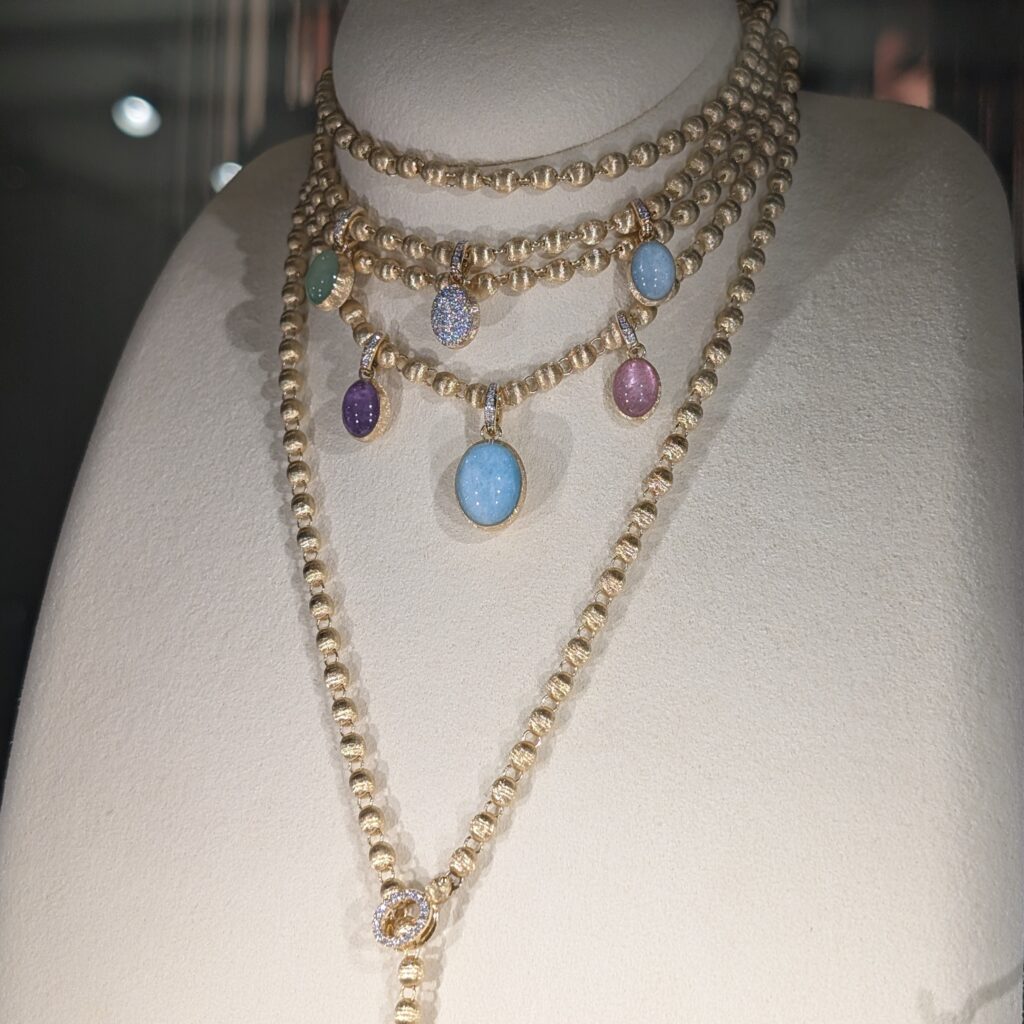
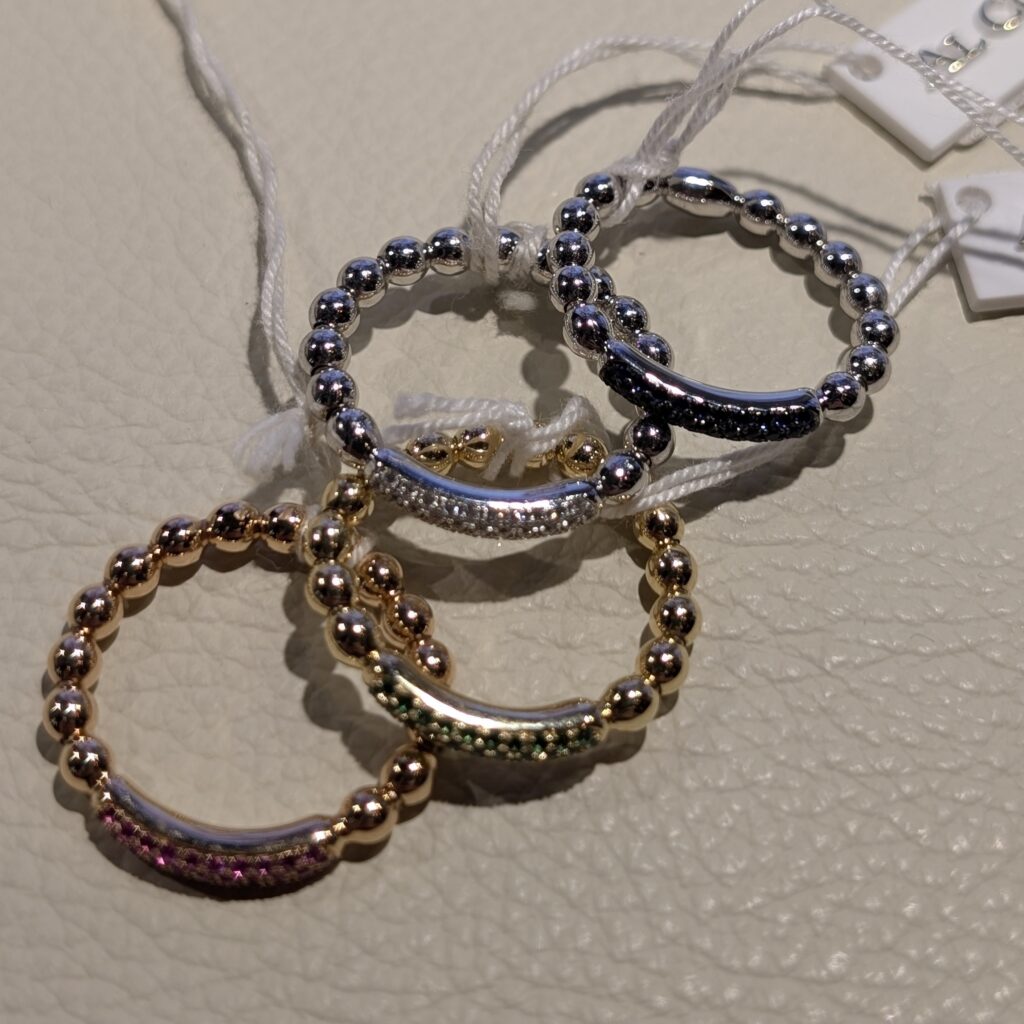
Stretchy jewellery is not a new invention either, but many brands are expanding or adding it to their range. The stretchy pieces of jewellery score points because they follow the development of their wearer in every situation - a single stretchy ring, such as the one from Al Coro, already covers three ring sizes. This is simply wonderfully practical and saves a trip to the jeweller because the size of the piece of jewellery does not need to be adjusted. For the manufacturers, the technology behind the jewellery always has its own USP, which can be communicated profitably. Thumbs up, I would say!




